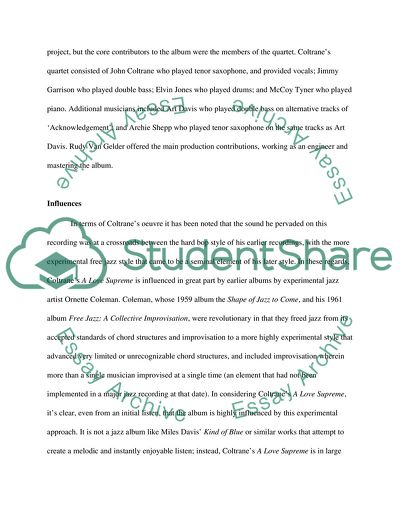Cite this document
(Jazz Critique: John Coltrane A Love Supreme Case Study Example | Topics and Well Written Essays - 1250 words, n.d.)
Jazz Critique: John Coltrane A Love Supreme Case Study Example | Topics and Well Written Essays - 1250 words. https://studentshare.org/music/1742978-jazz-critique
Jazz Critique: John Coltrane A Love Supreme Case Study Example | Topics and Well Written Essays - 1250 words. https://studentshare.org/music/1742978-jazz-critique
(Jazz Critique: John Coltrane A Love Supreme Case Study Example | Topics and Well Written Essays - 1250 Words)
Jazz Critique: John Coltrane A Love Supreme Case Study Example | Topics and Well Written Essays - 1250 Words. https://studentshare.org/music/1742978-jazz-critique.
Jazz Critique: John Coltrane A Love Supreme Case Study Example | Topics and Well Written Essays - 1250 Words. https://studentshare.org/music/1742978-jazz-critique.
“Jazz Critique: John Coltrane A Love Supreme Case Study Example | Topics and Well Written Essays - 1250 Words”. https://studentshare.org/music/1742978-jazz-critique.


